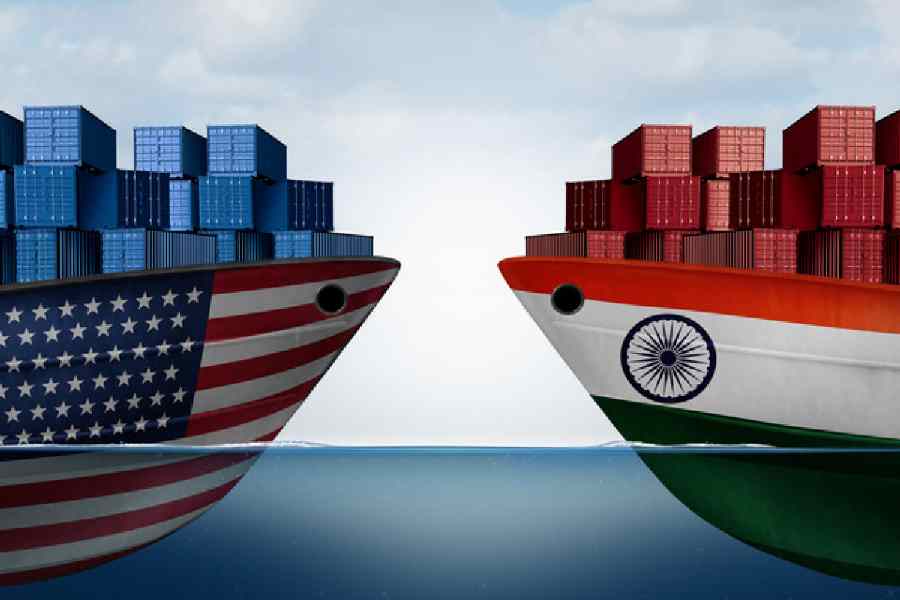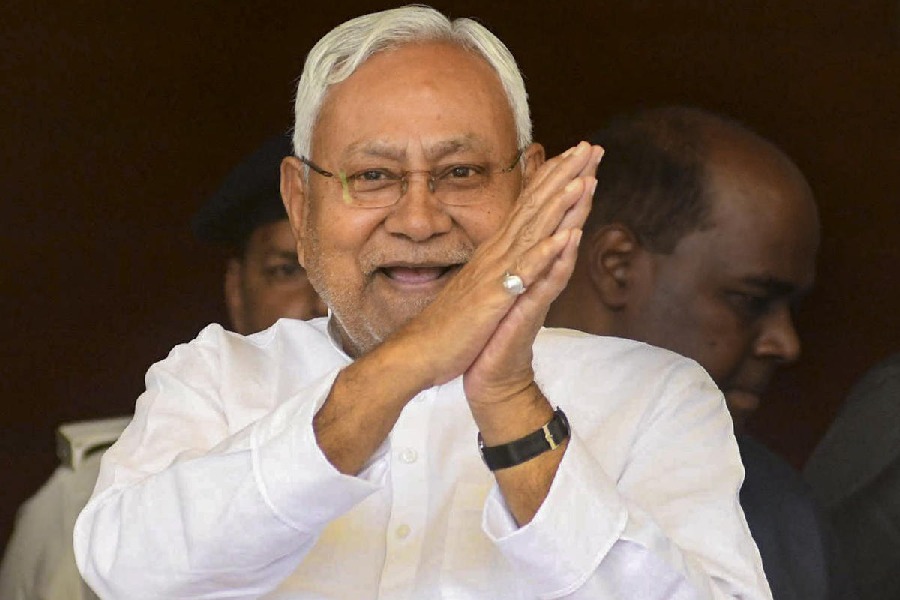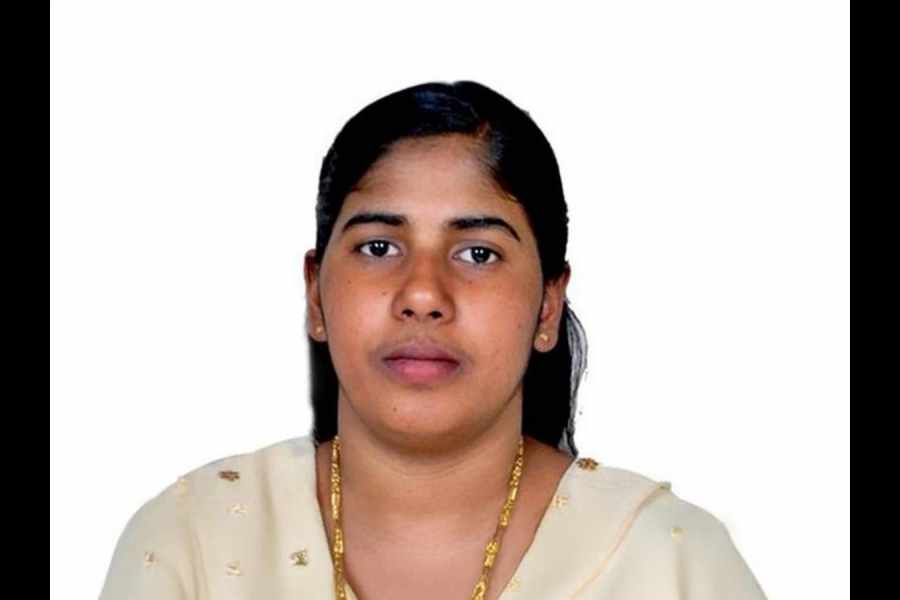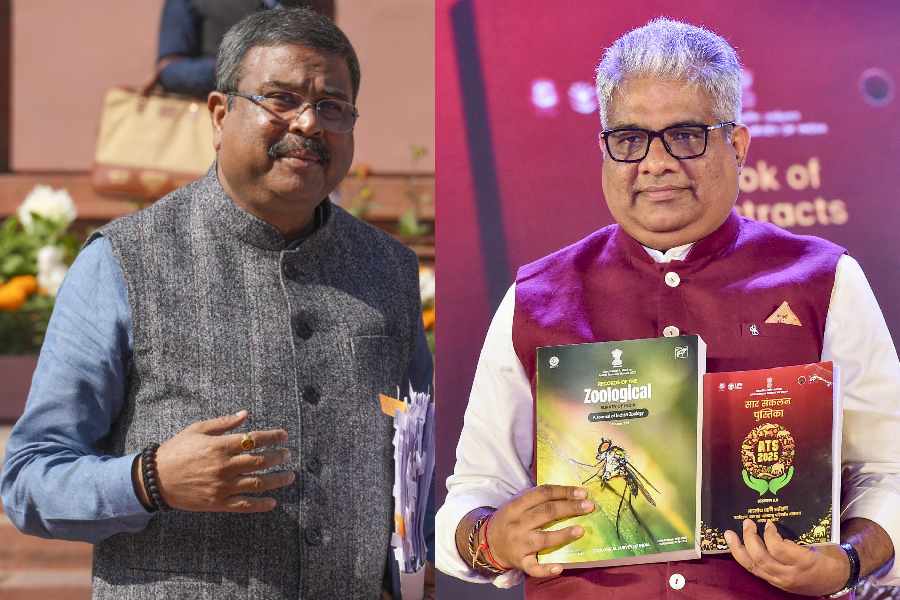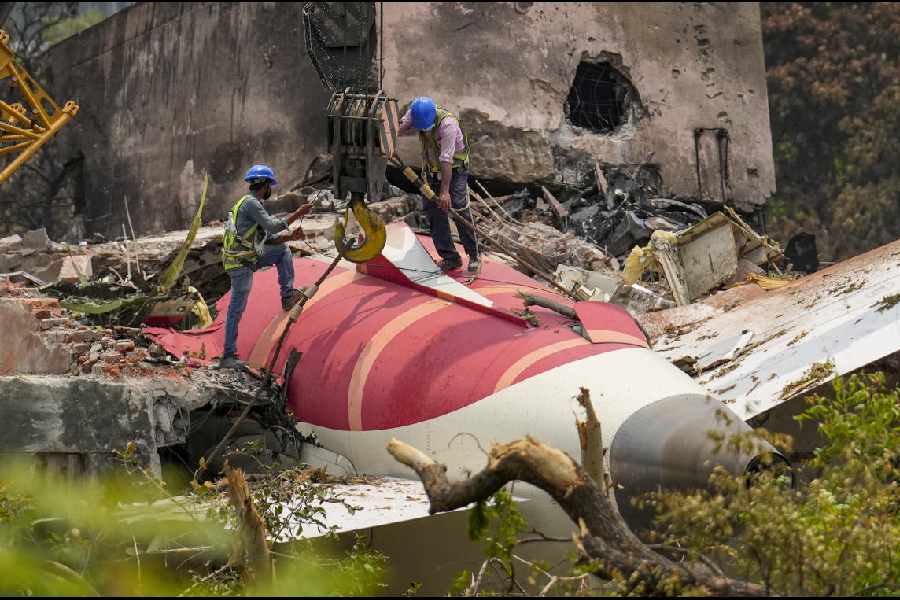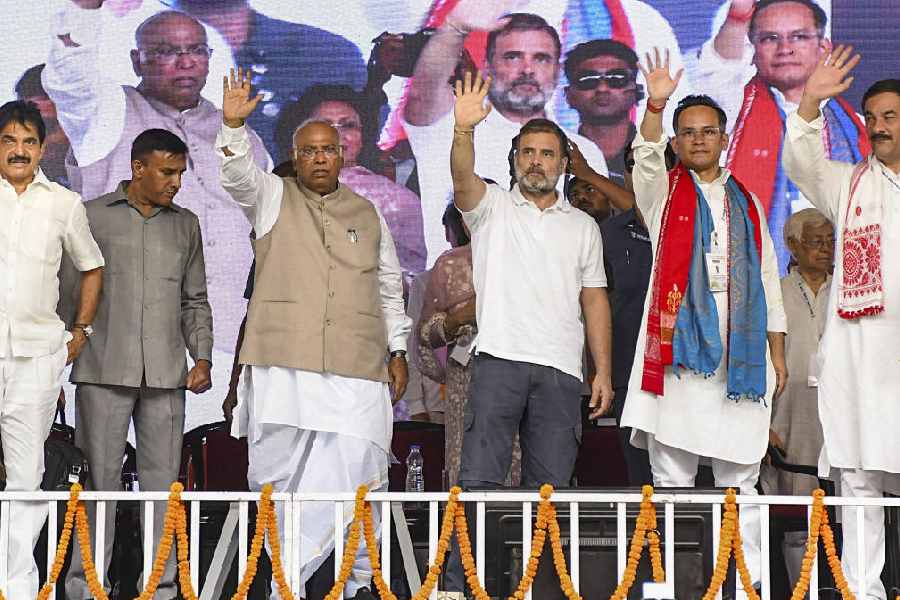The transformation of the prevention of terrorism ordinance to the Prevention of Terrorism Act on March 26 is a significant signpost in India's constitutional history for two important reasons. First, it is significant since Article 108 of the Constitution has been invoked for only the third time during the past 50 years to convene a joint session of Parliament to ascertain the approval.
In a situation when either house of Parliament is reluctant to endorse a decision, Article 108 provides for a joint session to resolve the impasse. Such joint sessions of Parliament were summoned twice before. Once the Rajya Sabha rejected the dowry prevention bill in 1961, the Congress government convened a joint session for its endorsement by a majority. The Janata Party government had resorted to it when 'the elders' did not approve the banking service commission (repeal) bill in 1977.
Second, though the outcome was well anticipated, the joint session was an opportunity for the National Democratic Alliance to flex its muscle vis-à-vis the Congress-dominated Rajya Sabha. In terms of its numerical strength, the upper chamber is simply not equipped to stall the acceptance of any bill when the Lok Sabha has adequate numbers to push whatever decisions it adopts. In the case of POTO, the ruling coalition openly challenged the Rajya Sabha which had rejected the bill, already approved by the lower house.
In the name of resolving a crisis - since the government was keen to adopt POTA - the NDA has contributed to a situation where the Rajya Sabha is identified more as an ornamental institution than a constitutional authority. It is clear that the latest joint session of Parliament was convened not to discuss the bill threadbare, but to rush POTO through by a majority.
As a piece of legislation, POTA has caused consternation on a mass scale. It has also raised important questions on the nature of India's federalism and the role of the council of states.
There is no doubt that the joint session was convened because the bill was rejected in the upper house. And the government's right to call for a joint session cannot be legally questioned since the Constitution has authorized it to resolve a deadlock. Given its majority in the Lok Sabha, the NDA government was certain of the passage of the bill. So the Rajya Sabha is ineffectual and its opposition to a bill is not of much consequence since Article 108 significantly tilts the balance in favour of the ruling coalition in Parliament.
What is the constitutional significance of the Rajya Sabha then? It is clear that the council of states in the Constitution does not exclusively represent the federal principle. Its primary role is that of a second chamber exercising legislative functions.
The Rajya Sabha, as envisaged in the Constitution, is not a federal chamber in the way the American senate is. Its primary function is to coordinate with the Lok Sabha in discharging the Parliament's legislative functions. Only under exceptional circumstances, as stipulated in Articles 249 and 312, is the Rajya Sabha, supported by no less than two-thirds of the members present and voting, empowered to make laws on any matter in the state list. For all practical purposes, the lower house enjoys 'hegemonic' powers and the upper chamber's authority is generally confined to ratifying decisions already taken in the Lok Sabha.
An analysis of voting in the Rajya Sabha on Article 249 will reveal the pattern. For instance, between 1950 and 1987, Article 249 was invoked only thrice - including once each in 1950 and 1951 under the provisional parliament, even before the Rajya Sabha was formally constituted. In 1986, the article was invoked again. That 78 per cent voted in favour of the ruling party demonstrates how, in the Rajya Sabha, members vote in accordance with their party affiliations.
There are, however, occasions when the Rajya Sabha has been tough with the lower house. Its partisanship was, for instance, demonstrated during the brief Janata Party interlude (1977-80) when the Congress-dominated Rajya Sabha thwarted a government-initiated constitutional amendment by refusing to endorse the move for which the support of two-thirds of the house was required.
The divide between the two houses has become more prominent of late. The Congress majority in the Rajya Sabha appears to have preempted several attempts to adopt legislations to fulfill the government's agenda, while in the days before 1967, the Rajya Sabha hardly played a significant role except to corroborate the views expressed in the lower house. Following the installation of non-Congress governments in various states since 1967, the upper chamber seems to have acquired a definite, if not completely new, role in the governing processes.
The rise of the regional parties in several states has radically altered the composition of the Rajya Sabha. In other words, parties other than the ruling party at the Centre are being able to send more representatives to the Rajya Sabha. As a result, ruling parties invariably have fewer members in the upper house than before. There have been occasions when the ruling party has failed
to muster the required two-thirds majority in the Rajya Sabha to pass constitutional amendments, as was the case
with the 43rd and 44th constitutional amendments.
The amendments were finally passed after an agreement between the ruling party, which had a majority in the Lok Sabha, and the opposition, which had a majority in the Rajya Sabha. The agreement amounted to saying that the Rajya Sabha shall literally remain a second chamber simply to follow and endorse the so-called 'first' chamber.
Perhaps the framers of the Constitution too wanted things this way. The Constitution lays down that in case of a conflict between the Lok Sabha and the Rajya Sabha over a money bill, the views of the former shall prevail. With regard to bills other than money bills, both houses have equal powers on paper, but in case of a deadlock, the provision of a joint session to resolve the impasse clearly places the Lok Sabha in an advantageous position.
Since the Rajya Sabha can, in accordance with Article 88(1), never have a strength of more than 250 members, it continues to be handicapped, at least numerically, vis-à-vis the Lok Sabha, which has more than 540 members. So, the joint session is a device that invariably endorses the decision of the Lok Sabha even if the Rajya Sabha votes en bloc to oppose it.
It is clear from this that the Rajya Sabha, as envisioned in the 1950 Constitution, is not a federal chamber in the classical sense of the term. Its primary function is to coordinate with the Lok Sabha in discharging parliamentary legislative functions. Towards strengthening the Rajya Sabha's role as an instrument for the effective representation of the states, the suggestions made by the Sarkaria commission in 1988 provided important directions.
Instead of restructuring the second chamber, the commission recommended 'procedural safeguards' that can easily be adopted without undermining the spirit of the Constitution. The Rajya Sabha, by its rules of procedure, may provide for the setting up of a special committee reflecting the opinions of various sections of the house. Through free and frank discussions at the level of committees, a consensus is likely to emerge even on resolutions under Articles 249 and 312. Whether it is a foolproof mechanism is difficult to determine given the rapidly changing political equations among the members of the house. This recommendation is potentially useful under the present political circumstances when single party majority seems almost an impossibility.
 Thursday, 17 July 2025
Thursday, 17 July 2025

